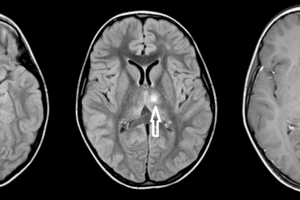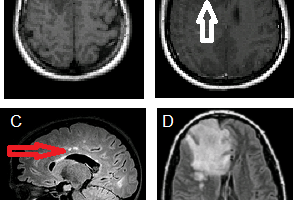AMSAN, or acute motor and sensory axonal neuropathy, is a subtype of Guillain-Barré syndrome that is characterized by a combination of distal weakness (motor), reduction or complete loss of deep tendon reflexes (DTRs) and sensory abnormalities.
The clinical presentation of AMSAN is similar to that of other GBS subtypes, incuding an illness within 2-4 weeks of the onset of motor weakness and sensory findings. Unlike the much more common AIDP form of GBS, sensory findings of pain, burning or tingling, and loss of sensation are often the presenting symptoms, with weakness lagging or more subtle than might be expected for more typical GBS.
While the motor symptoms are sometimes more subtle in AMSAN than the other variants, it is still important to regulary monitor ventilation using forced vital capacity (FVC) and negative inspiratory force (NIF) measurements. Examination of the neck flexors and extensors can also give information about the potential strength of the muscles of breathing.
Diagnosis of AMSAN hinges on EMG findings of axonal polyneuropathy, usually in the context of albumino-cytologic dissociation on LP. Unlike the demyelinating variants of GBS, AMSAN has only mild reductions in nerve conduction velocities but marked decreases in muscle action potentions and sensory nerve action potential amplitudes.
Similar to the other B-cell mediated auto-immune disorders, therapy centers on reducing antibody cross-reaction with normal tissue. IVIg, high-dose methylprednisolone, and/or plasmapheresis are the mainstays of AMSAN treatment. While pain and other sensory problems often resolve with suppression of the auto-antibodies, adjunctive treatment with antidepressants, gabapentin, and opiods can also play a role.


